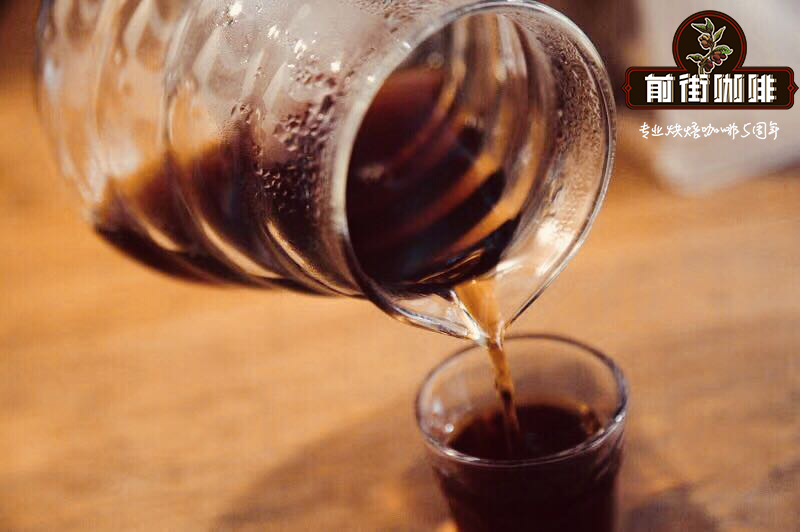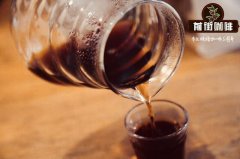Types and taste of coffee beans Arabica coffee is sour? is it better?

Professional coffee knowledge exchange more coffee bean information please follow the coffee workshop (Wechat official account cafe_style)
Brief introduction of Qianjie-Arabica varieties
Everyone is most familiar with Arabica, followed by Robusta, which should be no stranger, while the third kind of Liberia is seldom heard. This is because the output of Liberia is usually not much or the quality is poor, so it is often ignored, so I will not talk about it here.
Arabica is a representative variety of Ethiopia, and it is also produced in most other countries. It is the largest bean seed in the world, accounting for 70%. No wonder it is quite famous.
Arabica coffee accounts for 70% of all coffee production, and its excellent flavor and aroma make it the only coffee that can be drunk directly. However, its resistance to dryness, frost, diseases and insect pests is too low, especially the natural enemy of coffee-leaf rust, so all producing countries are committed to variety improvement. It turned out that all the commercial coffee in the world was small-grain coffee, but it was only at the end of the 19th century that growers began to look for other disease-resistant varieties because of the collapse of a large number of coffee farms caused by leaf rust.
Small-grain coffee is still the most important coffee variety, accounting for about 3% of the world's total coffee production. It is mainly grown in Latin American countries, but also partly in Indonesia and the Pacific islands. The geographical and climatic conditions of Brazil, the largest coffee producer in the world, are very suitable for the growth of small-grain coffee, and the main coffee varieties planted are also small-grain coffee. Brazil's coffee production accounts for more than 1% of the world's total output. The fruit of small-grain coffee is smaller than that of medium-grain coffee and large-grain coffee. The berries are oval and generally contain two seeds, the so-called "coffee beans".
The origin of the Arabica species (Coffea arabica) is the Abyssinia Plateau of Ethiopia (Abyssinia, now known as the Ethiopian Plateau). In the early days, it was mainly eaten as medicine (Islamic monks used as a secret medicine to cure the body and mind or to awaken the brain), developed the habit of baking and drinking in the 13th century, introduced into Europe through the Arab region in the 16th century, and became a favorite drink all over the world.
Taste: rich and delicate, strong smell, high acidity, slippery texture: not easy to have bitter taste
Chromosomes: 44 chromosomes
Caffeine: lower than Robusta
Knowledge: Arabica (Arabica) is one of two very important varieties in the commercial coffee industry, and another important variety is Robusta
In short: Qianjie is a coffee research hall, happy to share the knowledge about coffee with you, we share unreservedly just to make more friends fall in love with coffee, and there will be three low-discount coffee activities every month. The reason is that Qianjie wants to make more friends drink the best coffee at the lowest price, which has been Qianjie's tenet for 6 years!
END
Important Notice :
前街咖啡 FrontStreet Coffee has moved to new addredd:
FrontStreet Coffee Address: 315,Donghua East Road,GuangZhou
Tel:020 38364473
- Prev

How to brew pure coffee powder, how to brew coffee by hand, how to remove the new guide manual for beginners
Professional coffee knowledge exchange More coffee bean information Please pay attention to the coffee workshop (Weixin Official Accounts cafe_style) Qianjie-hand-brewed coffee process introduction Slowly brewing a cup of coffee is also a way to relax yourself, put a piece of your favorite music, slowly grind, smell the coffee aroma, such as setting a secluded valley garden, adjusting the water temperature, preparing a filter cup, sharing a pot, electronic scale
- Next

What are the advantages of Arabica coffee beans? where is the origin of Arabica coffee beans
Professional coffee knowledge exchange more coffee bean information please follow the coffee workshop (Wechat official account cafe_style) front street-Arabica variety profile everyone is most familiar with is Arabica, the second is Robusta, should be no stranger, and the third kind of Liberia is rarely heard, this is because Liberia's production is usually not much or poor quality, so often
Related
- Beginners will see the "Coffee pull flower" guide!
- What is the difference between ice blog purified milk and ordinary milk coffee?
- Why is the Philippines the largest producer of crops in Liberia?
- For coffee extraction, should the fine powder be retained?
- How does extracted espresso fill pressed powder? How much strength does it take to press the powder?
- How to make jasmine cold extract coffee? Is the jasmine + latte good?
- Will this little toy really make the coffee taste better? How does Lily Drip affect coffee extraction?
- Will the action of slapping the filter cup also affect coffee extraction?
- What's the difference between powder-to-water ratio and powder-to-liquid ratio?
- What is the Ethiopian local species? What does it have to do with Heirloom native species?

